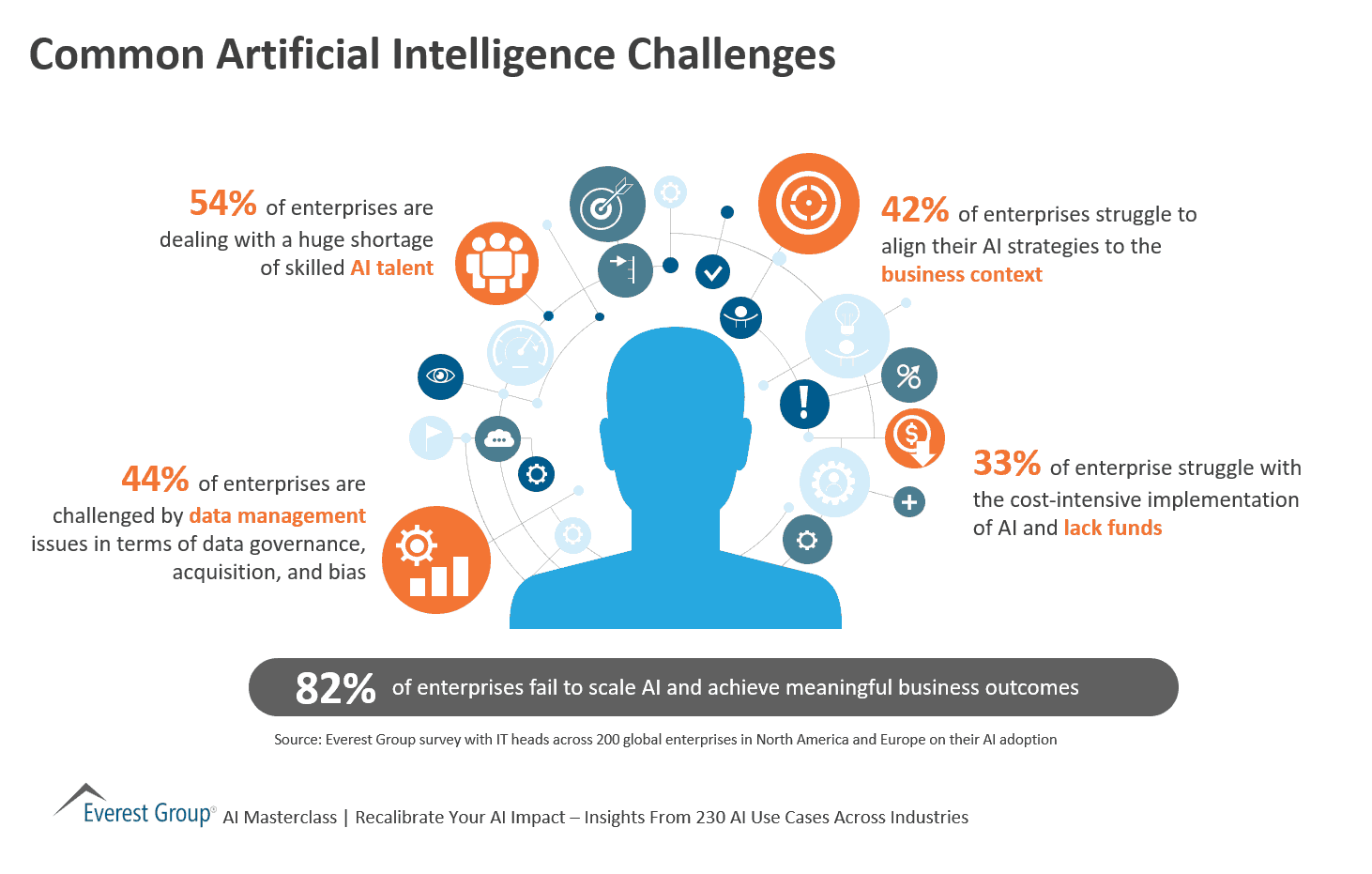
Photo by Possessed Photography on Unsplash
Navigating the Challenges of Artificial Intelligence: Safeguarding Data Privacy, Tackling Bias, and Addressing Job Displacement
Table of contents

Welcome to the fifth instalment of our blog series on artificial intelligence (AI). In this post, we'll delve into the challenges associated with the development and use of AI. While AI offers immense benefits, it also presents certain obstacles that need to be addressed. We'll explore three significant challenges: data privacy, bias, and job displacement. Additionally, we'll highlight examples of how these challenges are being tackled in the industry. Let's dive in and examine these critical concerns.
Data Privacy

Data privacy is a crucial challenge in the AI landscape. AI systems require vast amounts of data to train their algorithms and make accurate predictions. However, the collection, storage, and utilization of personal data raise concerns about privacy infringement. Mishandling of sensitive data can result in breaches, unauthorized access, or misuse. Industry Response: To address data privacy challenges, organizations and regulatory bodies are implementing measures such as:
a. Stricter Data Governance: Companies are adopting robust data governance frameworks that encompass data anonymization, encryption, and access controls to safeguard personal information.
b. Privacy-Enhancing Technologies: Techniques like federated learning and differential privacy allow AI models to be trained without exposing sensitive data, preserving privacy.
c. Compliance with Regulations: Organizations adhere to data protection regulations like the General Data Protection Regulation (GDPR) and the California Consumer Privacy Act (CCPA) to ensure transparency, consent, and accountability in data handling.
Bias

Another challenge in AI development is bias, both in training data and algorithmic decision-making. Biased data, reflecting societal prejudices or underrepresentation, can lead to biased AI models, perpetuating discrimination and inequality. Industry Response: Efforts to tackle bias in AI include:
a. Diverse Data Representation: Organizations are striving to ensure that training data encompasses a broad range of demographics, eliminating underrepresentation and reducing bias.
b. Bias Mitigation Algorithms: Researchers are developing algorithms that detect and mitigate bias in AI models. Techniques like fairness-aware learning and post-processing methods aim to create fairer outcomes.
c. Ethical Frameworks and Guidelines: Institutions are formulating ethical guidelines and principles for AI development and deployment, encouraging responsible and unbiased practices.
Job Displacement

The automation capabilities of AI raise concerns about job displacement and changes in the labour market. Some jobs may be replaced by AI systems, impacting the livelihoods of workers in various industries. Industry Response: Addressing job displacement involves:
a. Reskilling and Upskilling: Organizations and governments are investing in reskilling and upskilling programs to equip workers with the skills needed for emerging AI-related roles and to transition them to new job opportunities.
b. Collaborative AI: Rather than replacing human workers, collaborative AI focuses on augmenting human capabilities, enabling humans and AI systems to work together in synergy.
c. Socioeconomic Policies: Governments and institutions are exploring socioeconomic policies such as universal basic income and job transition support to mitigate the impact of job displacement and ensure a smooth transition for affected individuals.
Conclusion
While AI presents incredible opportunities, challenges such as data privacy, bias, and job displacement need to be carefully addressed. The industry is actively responding to these challenges by implementing measures to safeguard data privacy, mitigate bias, and facilitate job transitions. By fostering responsible AI practices and embracing a human-centric approach, we can harness the full potential of AI while minimizing its negative impacts.
Thank you for reading this blog on the Challenges of AI. We hope you found it informative and insightful. Stay tuned for our next instalment as we continue to explore the fascinating world of artificial intelligence.

